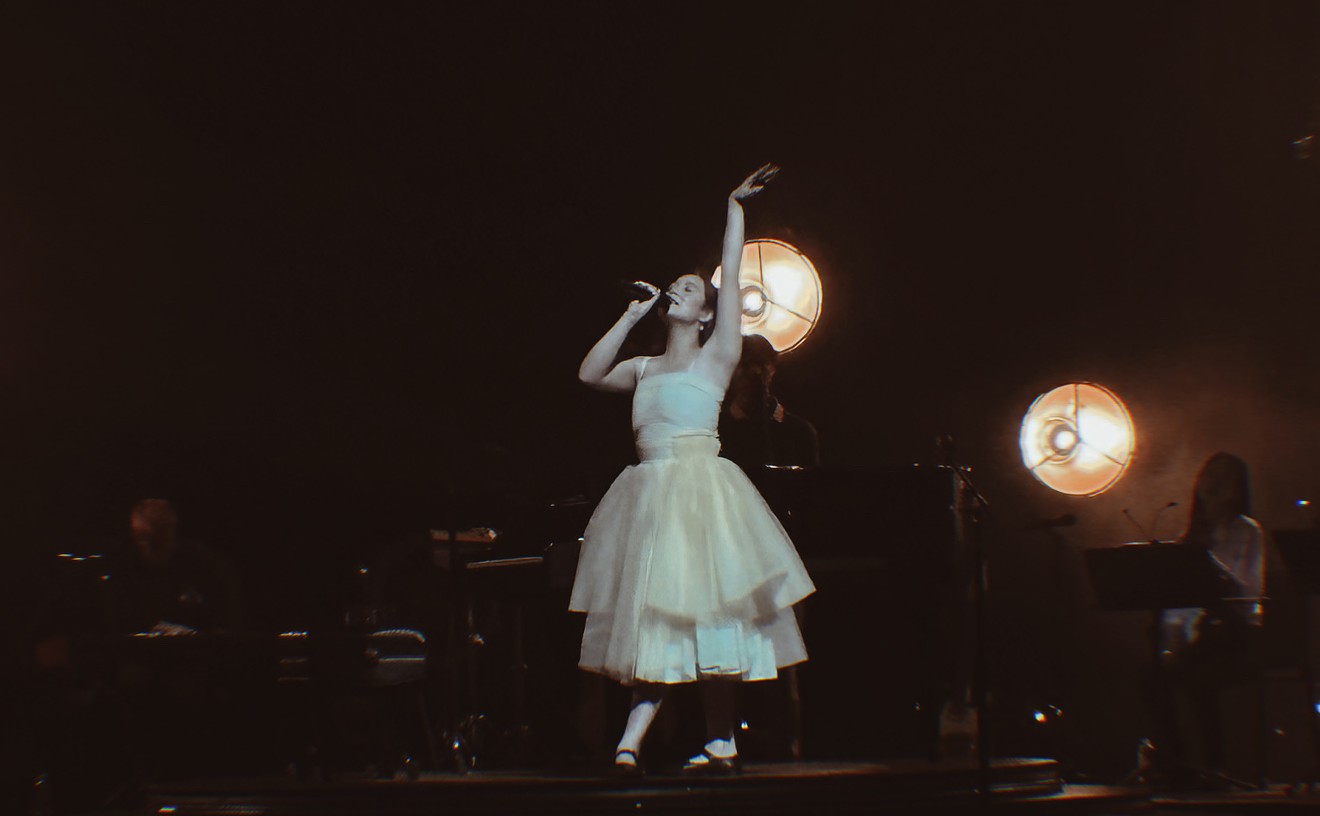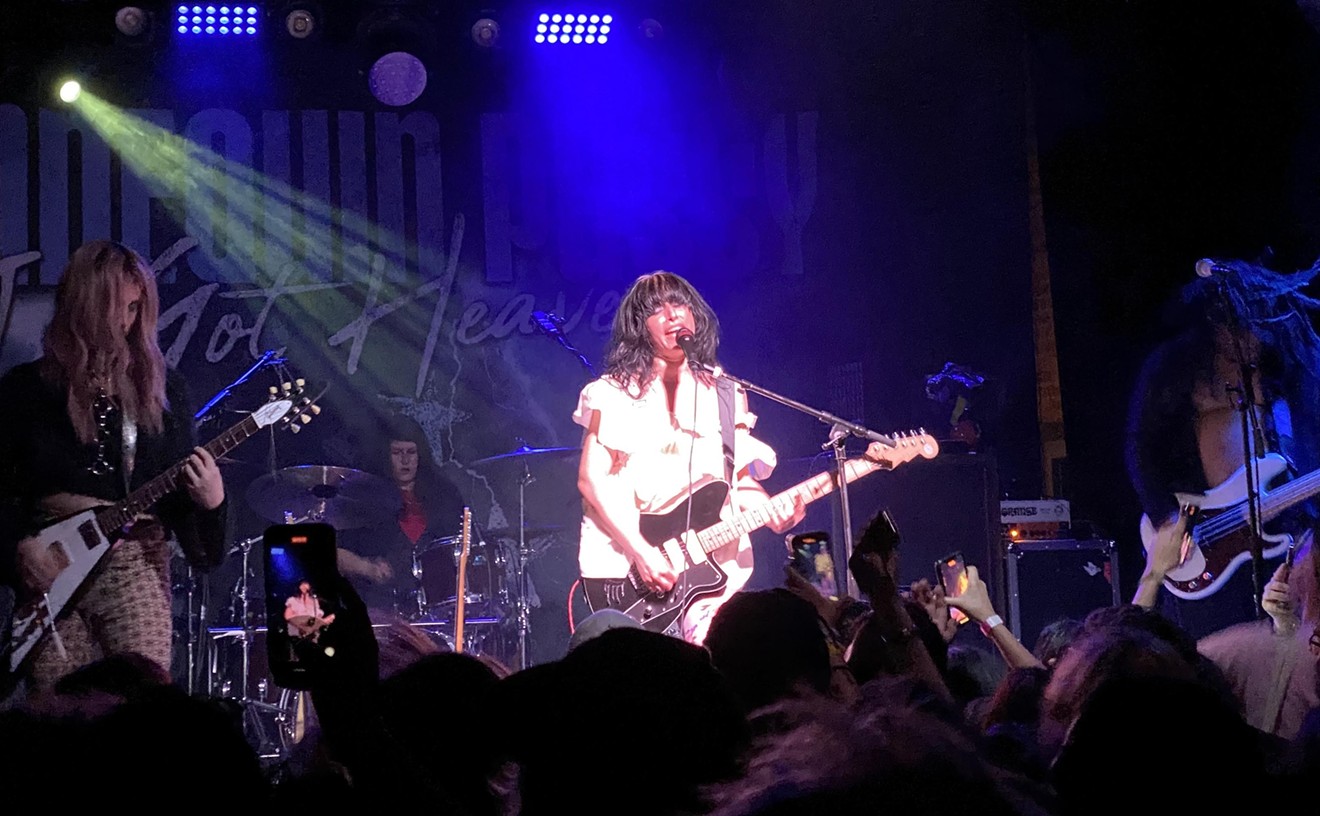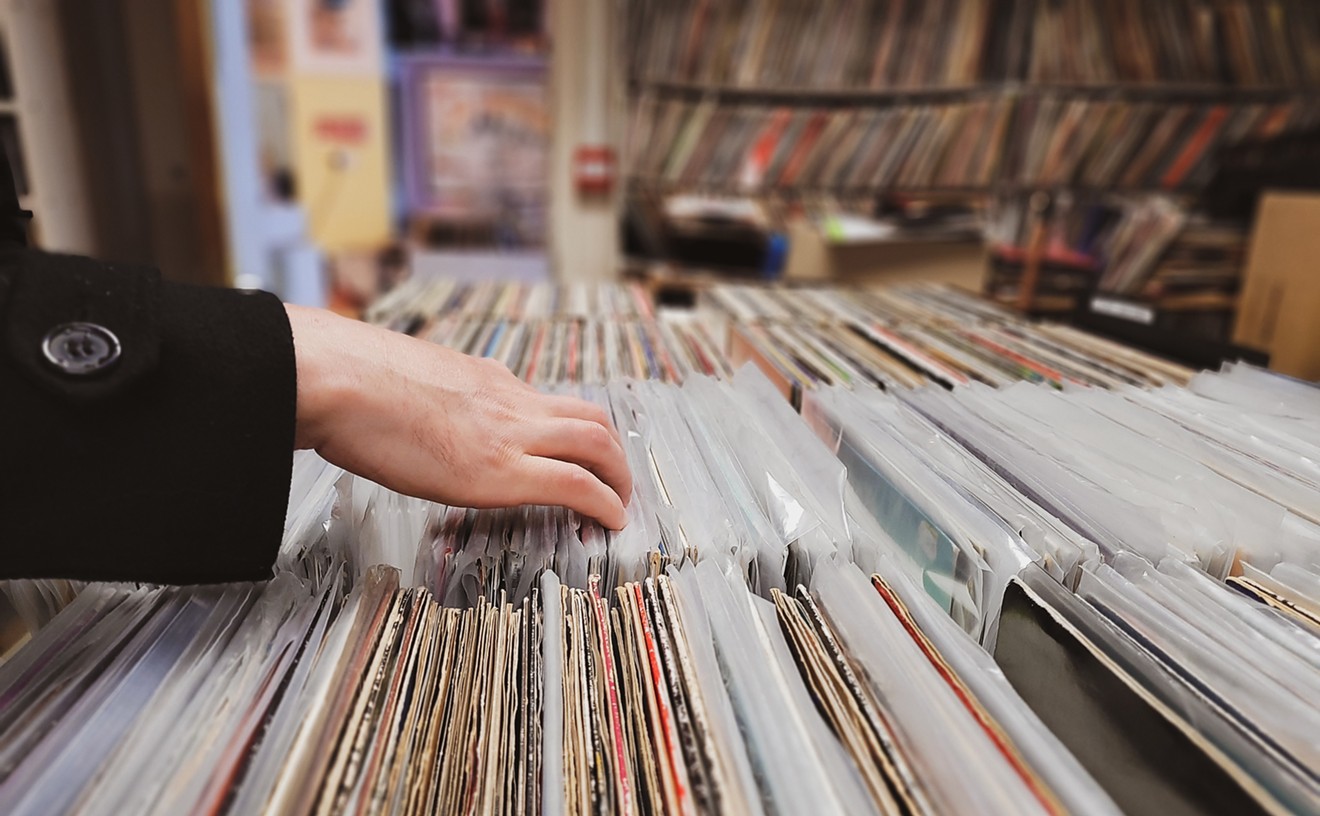It's a trail that starts on the basketball courts of New York's playgrounds and winds through stops in the Puerto Rican Pro Leagues, the offices of Def Jam, the pages of Vibe magazine, the airwaves of New York's WKCR and WQHT and the films of Spike Lee. Somewhere along the way you'd probably have a few minutes to kick it in the boardrooms of Nike, Adidas and Converse and share the stage with the likes of D'Angelo, Roy Ayers and Tony Allen (the legendary backbone for Fela Kuti's rhythm section). And you'd probably want to invest in a club to house your own DJ residency. While you're at it you might as well run one of the most influential indie hip-hop labels of the '90s (Fondle 'Em Records) while simultaneously operating a footwear shop in both Philly and NYC that specializes in vintage sneakers no longer in production (that would be "deadstock" to the enlightened).
Once you've built a résumé looking like that, it only makes sense to put together a book such as Garcia's Where'd You Get Those? It's an amazingly comprehensive look at how footwear for hoop heads became one of the key components in defining the hip-hop fashion sensibility that unwittingly propelled Nike and Adidas into a stratosphere far beyond that of an athletic footwear company.
The aforementioned path is a pretty exclusive journey, and the truth is that Garcia is probably the only person alive even close to being qualified and talented enough. Not only to pull this book off but also to make it an essential work for anyone even remotely interested in basketball, hip-hop, New York City or modern fashion. Where'd You Get Those? does a beautiful job of putting sneakers in their proper historical perspective, but it's Garcia's vibrant personality that shines through every page and makes it the undisputed hardback equivalent to underground cookies in plastic baggies.
To call this book a labor of love is like calling Jerry Jones an involved owner, and Where'd You Get Those? reveals a slice of Americana that Garcia has had a tremendous impact on.
"What's most important to me is what I've worn, what my friends have worn and what I've seen other people wear in New York," Garcia says. "And, of course, if I'm gonna talk about New York and my own experiences, then it's going to be about basketball and hip-hop culture."
The key word being culture, as that appears to be at the core of every endeavor Garcia has embarked on in his adult life. For most city dwellers who grew up in the late '70s and early '80s, hip-hop and playground basketball converge in a way that makes it hard to think of one without the other. This is clearly the case for Garcia and the crew he assembled to provide the running commentary in the book.
C'mon, dude--if you wanna know about kicks, you're not gonna check with Phil Knight. You're gonna see what's up with Frosty Freeze, the legendary b-boy. It's part of what gives the book its magically delicious flavor and makes it transcend the "this shoe came out then" idea.
Garcia taps into his network of like-minded sneaker connoisseurs--a roster that includes playground legends such as Pee-Wee Kirkland and Joe "The Destroyer" Hammond as well as hip-hop luminaries such as Dante Ross and 3rd Bass' Serch and Pete Nice--to aid in giving the book a lively, roundtable discussion feel. But that's only half the reason the book oozes so much style and finesse. In the case of Where'd You Get Those?, the layout and design dominate like David Thompson in a dunk contest against Billy Paultz. It's a beautiful thing.
There is page after page of rare snaps: shots from Rucker games in the '70s, Tiny Archibald playing pickup outside the PJs, old-school heads like Crazy Legs and Rammellzee rockin' their flavors and, of course, vintage sneakers. Garcia put in a lot of work to compile old photographs, catalog pages and magazine ads so that the book properly documents the artifacts of each era. And as author/photographer of Where'd You Get Those?, he not only went to great lengths to track down the original sneakers that were essential to the text, in most cases he actually photographed them when he found them. The accompanying captions he provides for the pictures deliver some laugh-out-loud moments.
It's Garcia's knowledge of the subject that makes the book possible, but it's his approach and passion that make the book great. The reason kids in New York bombed trains, broke out the ill windmill or froze some herb in the open court with the stutter-step in the first place was so that they could get a little shine and collect respect for their individual style, and that is perhaps the essence of Where'd You Get Those? It's all about the style.
"Realistically, I've always been a connoisseur," Garcia says. "I've always been someone who puts a lot of importance on what I wear. And in no way, shape or form would I want people to read the book and walk away from it being like, 'Damn, I wanna own 200 pair of sneakers.' Essentially the book is about putting some attention into what you're wearing, being unique and why you're wearing it."
Very little attention is paid to amassing a big pile of sneakers, but rather noticing the individual nuance of the different brands and models and the ways in which shoes can be worn or customized for maximum fulfillment. Whether it's for balling, breaking, writing or just kicking it on a stoop, no detail goes unrecognized when it comes to any and everything dealing with sneaker culture.
It would be easy to say that the book is a lifetime in the making. But more specifically, the first tremor was felt in 1991 when hip-hop bible The Source published an article Garcia wrote called "Confessions of a Sneaker Addict." In it, Garcia documented the withdrawal pains collectors (including himself) went through as the classic kicks gave way to the mass-produced, overdeveloped and overconsumed sneakers of the Air Jordan era.
"I saw in '90 and '91 how a small group of people were just fucking goin' apeshit trying to find old-school sneakers that they couldn't find anymore," he says.
This simple piece written from the heart was the catalyst for a chain of events that led to Garcia working in a consultant capacity for Nike, Converse and Adidas, and he eventually found his way into Nike's radio and TV spots. And at the same time he was gaining juice as the sneaker authority, his cred in hip-hop circles was going bananas.
You'd be hard-pressed to find a hip-hop fan who's been into it since before the days Puffy "invented the remix"--and ain't that some comical shit--who hasn't at least heard of The Stretch Armstrong and Bobbito Show. During its amazing run from 1990-'98 on WKCR-NY, Stretch and Bobbito introduced the hip-hop world to then-unsigned artists such as Nas, Jay-Z and the Wu-Tang Clan. By the time The Source bestowed Stretch and Bobbito with the title of "Greatest Hip-hop Radio Show of All Time" in 1998, the show had already led to a number of opportunities for Garcia to expand into other areas of interest. Among them: writer, actor, entrepreneur and all-around hip-hop torchbearer.
As the rep grew bigger, Garcia dabbled in a little bit of everything associated with hip-hop and/or hoops with great success. He gained fame as a top-notch party DJ and took small roles in films (including Spike Lee's Summer of Sam). His record label put out music by the likes of Kool Keith and MF Doom, and his "Soundcheck" column has appeared in Vibe since day one. And he ran his Bobbito's Footwork stores. All the while, he was still heavily involved in playground hoops and even hosted a playground-basketball talk-radio show, On the Fence, from 1995-'97. Garcia's well-rounded knowledge base was the reason Lee used him as music consultant for the key club scenes in last year's 25th Hour. His choice to lace the film with lesser-known gems from Cymande gave the movie that extra flavor that only someone on the inside could provide.
Outside of the Apple the book is probably easiest to find on Web sites such as Turntable Lab (www.turntablelab.com) and Sandbox Automatic (www.sandboxautomatic.com) that cater to the record-buying junkies surfing online. But reaction to the book has been so strong that national chains such as Barnes & Noble and Urban Outfitters have gotten into the act and are carrying it as well.
And the love doesn't stop there. Image Entertainment has picked up Bobbito's Basics to Boogie, an instructional basketball DVD focusing on handles, for national distribution in 2004. Harmless Records in the U.K. has just released a compilation CD he put together with DJ Spinna called The Wonder of Stevie, which arose from parties they throw each year to commemorate Stevie Wonder's birthday. On it, Garcia and Spinna concoct a beautiful blend of Wonder tunes covered by artists ranging from the Main Ingredient to Ray Barreto. Video gamers currently plastered to their couches are hearing his voice as the announcer on EA Sports' NBA Street 2. His Project Playground Basketball halftime performance show (which found its way to Dallas at a few Maverick games last season) is gearing up for another busy season of showing the ill skills with funky Latin gems providing the score.
Combine all that with the choice selections from the likes of Vinia Mojica and Butta that he's released on his new record label Fruitmeat, as well as his latest venture (a yearly playground basketball magazine called Bounce), and Bobbito Garcia has enough to keep him busy for several lifetimes.
But Where'd You Get Those? deserves the biggest notice. And it almost didn't happen. When Dana Albarella approached Garcia in 1999 to write a sneaker book for her Testify Books publishing company, his quasi-celebrity status and unique skill set made the idea seem like a no-brainer, but Garcia wasn't sold.
"I'd tried to publish a book years ago of a collection of my writings from different magazines, and it didn't really go anywhere, so I can't say that I necessarily had the best experiences with book publishing," he says. "But I'm glad that she stuck with it, because four years later--boom! We got a book, and it's fuckin' hot, and it's selling, and you know, the fuckin' New York Times is writing about it, and you know, I'm buggin'."










